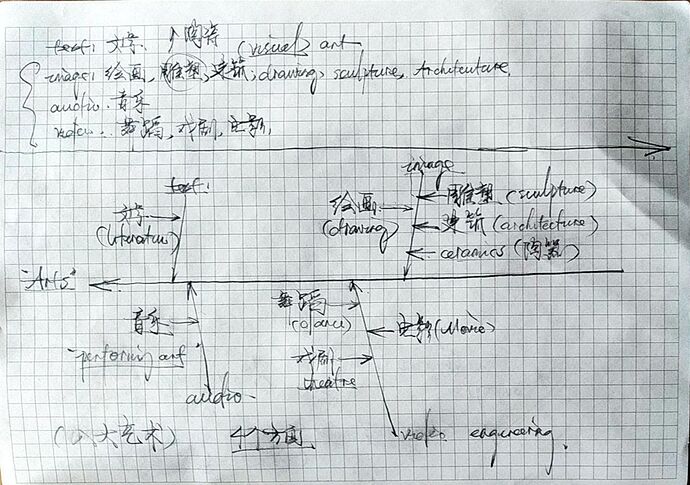1.1.Home目录 :
安装Ubuntu后, Home文件夹下主要有四个文档:
- Documents
- Pictures
- Music(注意是不可数名词)
- Videos
人类的信息交换, 传播与存储, 只有这四个方面:
- Text(文本)
- Image(图像)
- Audio(声音)
- Video(动态)
看一眼, 由静态入动态, 由文字到造型八大艺术:
番外,
video这个单词, 我总typo成vedio, 后来读"凯撒"的维基百科,
那句著名的:
"我来, 我见, 我征服"的拉丁语"Veni(Venue), Vidi(Video), Vici(victory), 再也没有拼错过.
